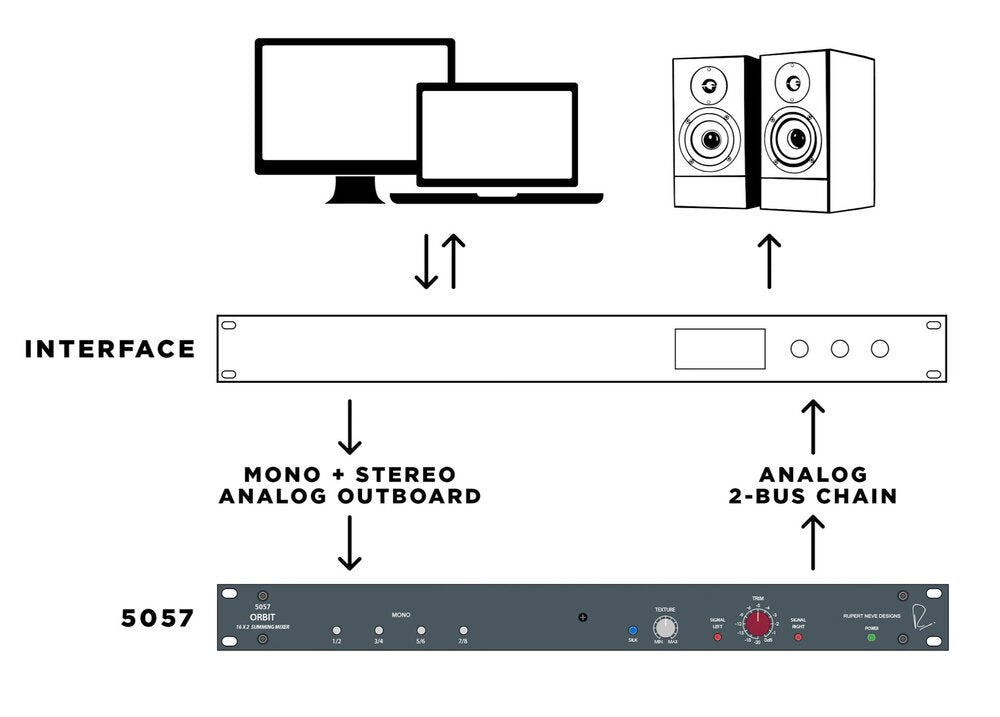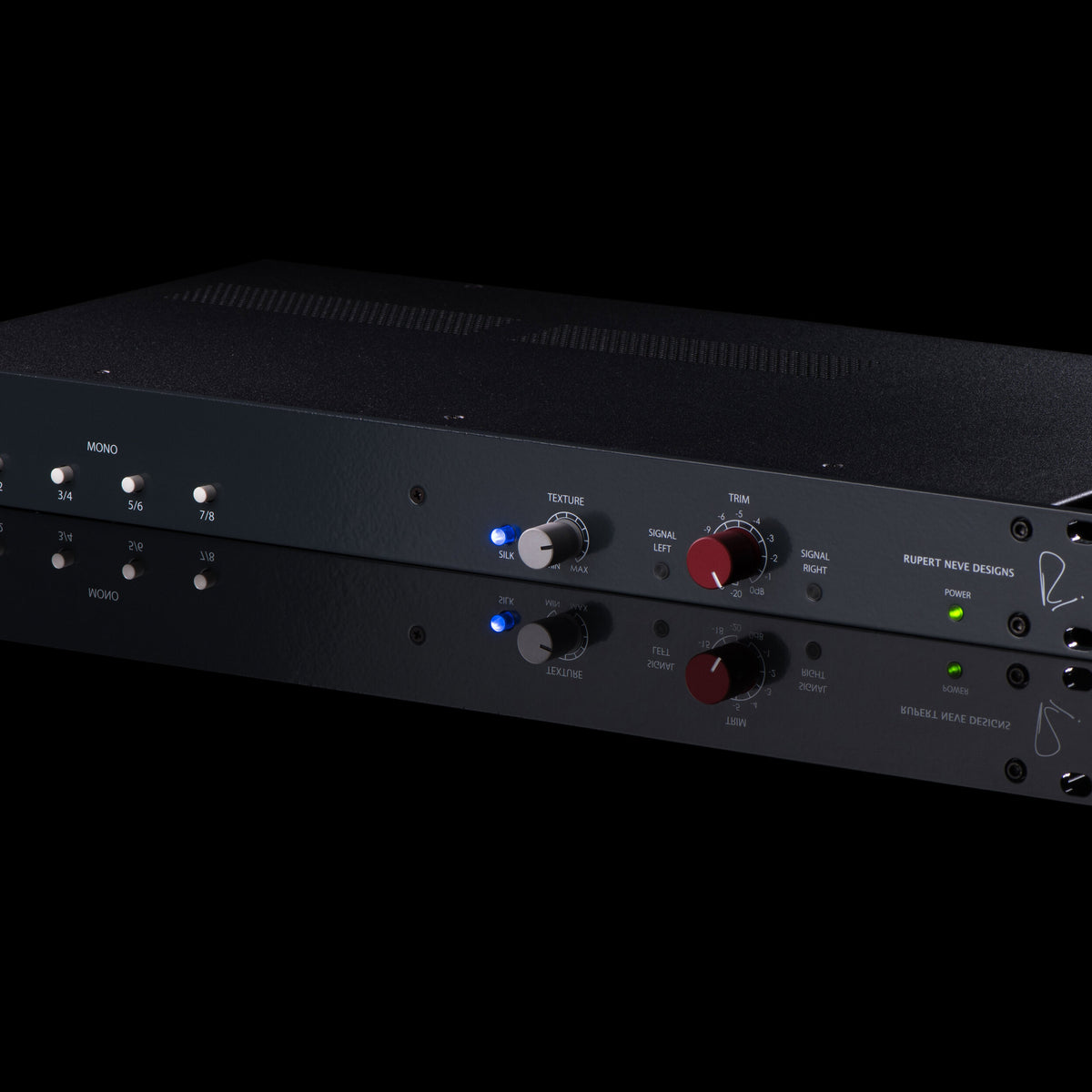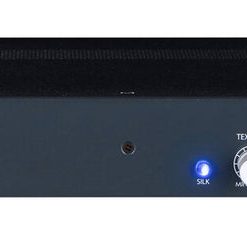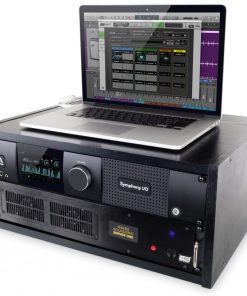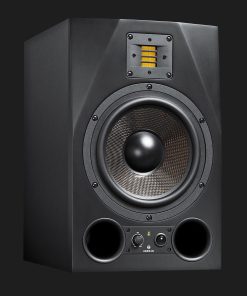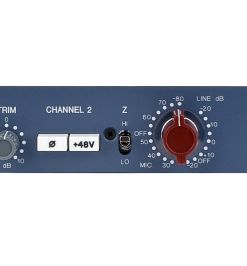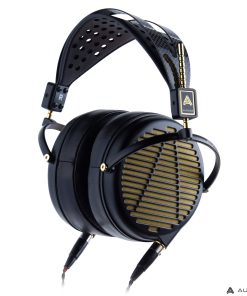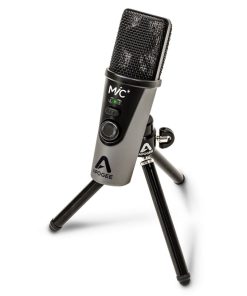Rupert Neve Designs | 5057 ORBIT 16 x 2 Summing Mixer Rupert Neve Designs
$ 1.999,00 Original price was: $ 1.999,00.$ 499,75Current price is: $ 499,75.
5057 ORBIT
16 x 2 Summing Mixer
All the tone, power, and depth of a Rupert Neve console in a single rack space.
Firmly rooted in six decades of console design experience, the 5057 Orbit gives your mixes the legendary tonality, power, and wide-open soundstage that only Rupert Neve’s class-A analog summing can provide. Coupled with Rupert’s famous custom audio transformers and Silk Red & Blue circuitry for variable harmonic saturation, the Orbit launches sterile in-the-box mixes to new heights of tone, depth and clarity – without compromising the recallable convenience and repeatability of your DAW-based workflow.
“…the perfect workflow for the modern age.”
When you push a mix buss and output transformers towards saturation, the non-linear, musical harmonics that occur are what truly glue a recording together and bring it to life.
Rather than using an external summing solution that offers little more than an ultra-clean representation of the in-the-box experience, the Orbit provides the extraordinary richness, harmonic complexity and depth that only a Rupert Neve console can bring to your mixes.
The Orbit utilizes a highly custom output transformer configuration originally developed for the acclaimed Shelford Channel, which provides both a Main Output and a -6dB Output – the latter of which enables you to fully drive the Orbit to achieve more transformer harmonics without clipping the next device in the chain. This unique transformer drive is a hallmark of the sound of Rupert Neve throughout the years – and the sound of countless classic hit records.
Classic Sounds on Demand
Every mix demands its own treatment. In addition to the choice of outputs, the continuously variable Texture control with Silk Red and Silk Blue modes gives you complete control over the harmonic density and tonality of your mix – or lets you keep it utterly pristine and uncolored.
The Silk Red mode accentuates transformer saturation in the high and high-mid frequencies to amplify the vibrant midrange harmonics associated with Rupert’s vintage equipment, while Silk Blue accentuates saturation of the lows and low-mids to add thickness and weight to any source – especially useful for “thin-sounding” mixes. Unlike EQ, these Silk & Texture controls saturate the output transformers, and add highly musical harmonics to the source material according to the amount of Texture applied.
Drive the mix buss hard, choose your Silk flavor, and crank the Texture knob for a rich, saturated, vintage vibe – or disengage Silk entirely for clear, wide-open sonic beauty. The choice is yours.
Build your Dream
While the Orbit is an extremely effective tool on its own, multiple units can be combined through the Buss Link for a higher channel count. The 5057 Orbit can also be used as a building block in an expandable summing system utilizing the 5059 Satellite for flexible summing & routing, and the 5060 Centerpiece for additional mixing and monitoring features.
These units create the core of a world-class analog modular console system rivaling any traditional large-scale studio setup.
Channel Separation and Accuracy
With precisely fixed channel levels and accurate mix buss attenuation via high-quality stepped switching, the Orbit’s purist signal path has vanishingly low crosstalk, and channels matched to within +/-0.1dB. This provides your mixes with the widest and most accurate stereo image, the greatest depth, and the most direct signal path, allowing you to hear every single detail of your mixes.
DAW Based Recall without Compromise
Frequent recalls can be a challenge for modern mix engineers. The Orbit’s elegant simplicity and fixed level accuracy provides rapid, repeatable DAW-based recall from mix to mix, while adding the rich, unrivaled sound quality of Mr. Neve’s class-A transformer-coupled mix buss.

CONTROLS
MONO
Push-button switches that allow the user to MONO sum the first eight input channels, in pairs. Each channel is unity gain from input to output.
SILK
Illuminated push-button switch that toggles between the transformer saturation modes: OFF, RED, BLUE.
TEXTURE
31-detent potentiometer that controls the amount of transformer saturation when SILK is engaged.
SIGNAL LEDS
LEDs that illuminate GREEN to indicate signal is present (-20dBu) and subsequently illuminate RED (+24dBu) when the signal is 2dB below clip point.
TRIM
12-position rotary switch that controls the attenuation level of the Main Output and -6dB Output within a tolerance of +/- 0.1dB.
POWER
Power status indication LED.
FEATURES
16 Channel +/- 21V Class-A mix buss for massive headroom
Silk Red & Blue modes with Texture control to precisely dial in the desired amount of classic tone
Dual-tap output transformers create rich harmonic character without clipping the next device in the chain
Mono switches enable you to precisely center any mono mix elements like vocals, kick, snare and bass
Exceptional linearity and accuracy, better than +/-0.1dB per channel
Ultra-low crosstalk for wide open stereo imaging and sonic depth
Expandable for higher channel count via buss link to other 5057 units
Repeatable, rapid DAW-based recall while adding the rich, unrivaled sound quality of Rupert Neve Designs
Robust and compact 1U chassis design with DB25 inputs and XLR outputs
Combine with other Rupert Neve Designs summing products to create a world-class modular mix system
SPECIFICATIONS & DOWNLOADS
INPUT IMPEDANCE
16K Ohm
FREQUENCY RESPONSE
10 Hz to 50 kHz: +/- 0.1 dB
150 kHz: -3 dB
NOISE
From 22 Hz – 22 kHz.
-90 dBu typical
MAXIMUM INPUT LEVEL
@ 1 kHz: +26 dBu
MAXIMUM OUTPUT LEVEL
@ 1 kHz: +26 dBu
THD+N%
From 22 Hz – 22 kHz.
0 dBu @ 1 kHz: 0.003%
+20 dBu @ 1 kHz: 0.0006%
CROSSTALK
1 kHz: -103 dBu
10 kHz: -93 dBu
PRODUCT DIMENSIONS
19” W (48.3 cm) x 9” D (22.9 cm) x 1.75” H (4.4 cm)
SHIPPING DIMENSIONS
24” L (61 cm) x 13” W (33 cm) x 4” H (10.2 cm)
SHIPPING WEIGHT
10 lbs (4.5 kg)
FREQUENTLY ASKED QUESTIONS
The summing architecture is essentially the same between all three of our Summing Family mixers. They each have different feature sets to address different needs, but sonically they’re all nearly identical. The main exception would be the secondary -6dB output on the 5057, which reduces the likelihood of clipping the next device in the chain when driving the unit very hard, and thus may allow for greater potential harmonic saturation.
64 channels (4 units) is the maximum recommended summing buss size for multiple linked 5057s.
Yes! They are isolated from one another and can be used simultaneously.
If you are looking to fully drive the output transformer to impart the non-linear harmonic content that adds dynamic richness to the sound (and you don’t want to clip your converters) the -6dB output is the way to go. If you want maximum headroom, use the Main output.
Generally people record the mix output into a stereo input in their DAW, but you can also record to an external tape machine or other “2-track” destination. Remember: whatever you do, always have a way to monitor your recorded mix so you can reference the final print.
Not necessarily. We’ve been conditioned to see red peak lights as meaning “bad” – but remember, this is analog, not digital. Oftentimes, the “glued-together” sound we’re looking for from an analog mix buss comes from overdriving the output stage, and this may mean some peaks here and there. Just like with a real analog mixing console, use your ears to tell you when you’re hitting the mix too hard.
Speedy Shipping and professional packaging
Because of our long-standing partnership in a long-standing partnership with UPS, FedEx, DHL and a variety of other world-class carriers, we can provide various shipping options. Our warehouse personnel will pack every item to our exacting specifications. Prior to shipping, your goods are carefully examined and safely secured. We deliver to thousands of clients every day in a variety of countries. The fact that we are committed to becoming the biggest online retailer in the World is clear. We have distribution centers as well as warehouses located in Europe and in the USA.
Note: Orders with more than one item are assigned a processing period in accordance with the item.
Before shipping, we will inspect the ordered items thoroughly. The majority of orders are shipped within 48 hrs. The expected delivery time is between 3 and 7 days.
Returns
The inventory is always changing and we do not completely manage it because multiple stakeholders are involved, including our warehouse and factory. The levels of stock can change at any time. Be aware that it's possible for your order to be out of stock after you have placed the order.
Our policy lasts thirty days. If 30 days have passed since you purchased your item, we will not be able to offer you a return or exchange.
To be returned it must be in its original packaging, unopened and in the condition you received it in. It should also be in the original packaging.
Related products
Audio Interfaces
Plug-ins: Virtual Processors
Active Monitor
Software & Plug-ins
Software & Plug-ins
Acon Digital | AudioLava 2 Audio Restoring and Recording Plug-in Acon Digital
Plug-ins: Virtual Processors
Plug-ins: Virtual Processors
HEADPHONES
Audio Interfaces
Software & Plug-ins
DAW Software
Plug-ins: Virtual Processors
Plug-ins: Virtual Processors
Plug-ins: Virtual Processors
HEADPHONES
HEADPHONES
Audio Interfaces
HEADPHONES
HEADPHONES
Plug-ins: Virtual Processors
Plug-ins: Virtual Processors
Software & Plug-ins
Studio Mixers & Control Surfaces
Plug-ins: Virtual Processors
Software Bundles
Audiority | British Tanks Collection Bundle Plug-in Audiority
USB Microphones
Software & Plug-ins
2nd Sense Audio | Wiggle Wavetable Synthesizer Plug-in 2nd Sense Audio
HEADPHONES
Software & Plug-ins



